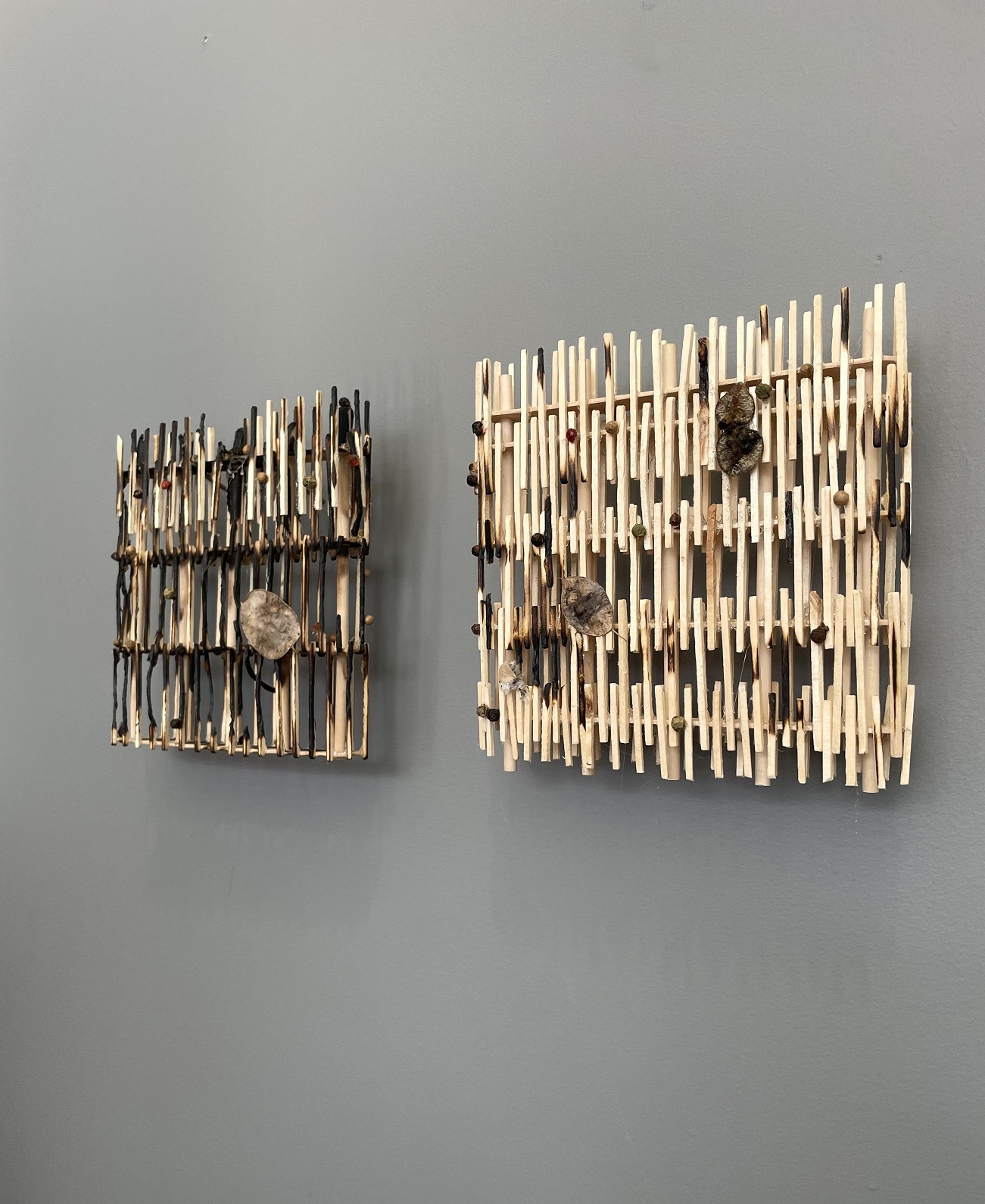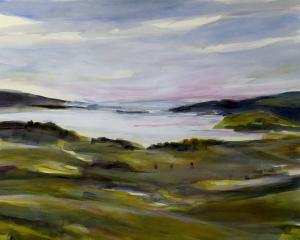
(Olga)
This group exhibition of primarily local Otepoti Dunedin-based artists is the first show to take place in the evolving aesthetic configuration of Olga Gallery. The art works are presented on gallery walls and plinths newly painted a shade of soft-slate grey — a move that positions the gallery beyond the "white cube" aesthetic and towards a more intimate experience. Further spatial and structural changes planned for the new year will develop this intimacy and enable the gallery to offer more agile and responsive modes of presentation.
"XX" includes too many artists to name individually; however, the selection triangulates artists who show regularly with Olga, such as Jay Hutchinson, Philip Madill, Anya Sinclair and Marie Strauss; artists associated with the Dunedin School of Art (staff and students), including Michael Greaves, Michael Morley, Pippi Miller, Linda Cullen; and established artists exhibiting at Olga for the first time, such as Victoria McIntosh. Of the Dunedin School of Art students, recent graduates Pippi Miller and Linda Cullen continue to impress. Cullen currently has a solo exhibition at Wave Project Space. While noting the inclusion of work by Craig Easton, a New Zealand artist based between Melbourne and China, the loose triangulation of artists outlined positions Olga as a gallery that is strongly supportive of local artists.
Given the previous exhibition of ceramics by the Rayner brothers, this exhibition’s focus on wall-based works is well considered. Among abstract paintings by Greaves and Morley, pencil drawings by Madill and figurative paintings by Cullen, and Ed Ritchie’s mixed media assemblages constructed with small, slender fragments of timber charred to various degrees, are noteworthy.

(Brett McDowell)
If "runcible" is a nonsense word invented by Edward Lear (the "runcible spoon" used by the Owl and the Pussycat), the exhibition "Runcibles" is a curated selection of artworks by leading Aotearoa New Zealand artists that lure the viewer into worlds where sense is suspended, and exuberance is celebrated. The worlds are many, because there are at least 23 distinct artistic imaginations at play. There are the densely colourful, somewhat madcap fabric-on-board creations of Jim Cooper, Kirstin Carlin’s scent-heavy flowers in plum and pale shades freshly unfurled, Mark Braunias’ idiosyncratic, ideographic shards of colour and fluoro-bright frames, and Nicola Jackson’s picture-within-a-picture concoctions of viscera, flowers, and vases.
Amidst the urgent vibrancy there are quieter works by Jeffrey Harris — in terms of palette but not subject matter, a sombre, strongly delineated linocut by Marilynn Webb of Lake Mahinerangi, a dark blue-grey flock of birds flying within a similarly-toned umbrella shape by Barry Cleavin, and tall stripes of mottled greys and whites by Geoff Thornley. For a hush of melancholy, there is a monoprint of a black Medusa-like figure in a dark frame by Jason Greig.
In the neither excessively vibrant nor sombre range, "Runcibles" includes a work each by Joe L’Estrange (orange marigolds not cats), and Joanna Margaret Paul — one of her signature-style, effortless drawings in watercolour and pencil.
For an engagement with a very particular cosmology, Kushana Bush’s lithograph Cosmic Bull utilises ropes and lassoes strung with toothbrushes to harness together a bull, a pig, humans, a bird, wooden barrel, urn, drum, and a swan-necked toilet cleaning container.

Toko by and by is an exceptionally resolved and nuanced exhibition by Madison Kelly (Kai Tahu, Kati Mamoe, Pakeha). Born of Kai Tahutaka (Kai Tahu culture) and the artist’s time as the 2022 resident at the Caselberg Trust in Whaka Oho Rahi Broad Bay, the exhibition is a layered meditation on Kai Tahu tipuna Patahi and the meeting of moana and whenua in the bay. In Patahi’s relationship with takata pora (Pakeha) Edwin Palmer and the subsequent loss of her daughters, the interactions between the human tipuna and the moana-whenua tipuna is one of fleeting encounters and impressions.
In gallery one, the installation toko toko toko toko (2022) is at once solid in structure (aluminium pipes, hose clamps) and ephemeral in sonic resonance (the pipes are designed to be hit). Installed along two of the gallery’s walls (across the right-angled intersection), the work embodies the two iterative peaks of high tide during the month of December. That is, the short lengths of aluminium pipe that begin the high-pitched parabola shape are the low-tide reaches of the moana, and the ever-increasing tall lengths of pipe are the high-tide markings on the whenua. From low to high, the parabola peaks and diminishes twice, making conceptual-spatial use of the bisecting wall. In a similar vein, the sonic reverberations emit a loud or strong wavelength of sound that diminishes with time. Even the title, which variously means, "stick, support, divorce, to well up", fulfils the narrative dimension of the work, while also embodying the sound and rhythm of the pipes when struck.
By Robyn Maree Pickens

!["Flux" featuring Portraits of Geoff Dixon (2021–2025), acrylic on paper [installation view], by...](https://www.odt.co.nz/sites/default/files/styles/odt_landscape_small_related_stories/public/story/2025/07/1_macleod.jpg?itok=ywgJww50)









